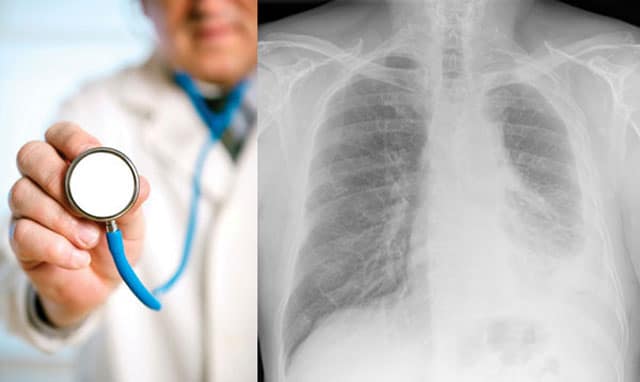Mesothelioma is a type of cancer which usually grows in the pleural membrane in the side of the chest. The chest contains two layers, the pleural space, which are both as thin as the skin of a balloon. The layers, known as the pluera or pleural membrane, line the outside of the lung (inner layer) and the inside of the chest (outer layer). Normally this space contains a small amount of fluid which lubricates the surfaces and allows the lungs and chest wall to expand and move as a person breathes in and out.
When mesothelioma cancer cells grow (usually in the pleural membrane but also, possibly, in the lining of the abdomen or heart), a simgle large tumour or lots of small tumours are formed. These tumours cause the pleural membrane to grow thicker.
The three types of mesothelioma are:
Sarcomatoid mesothelioma where the cells are usually oval shaped; this form of mesothelioma is less common, agressive and responds poorly to treatment
Epithelioid mesothelioma where the cells are usually cube-shaped; this form of mesothelioma is the most common type, the slowest in terms of growth, and usually responds better to treatment
Biphasic mesothelioma where the cells are a mixture of oval and bube shaped; this form of mesothelioma is also less common; it is more agressive than epithelioid mesothelioma but grows at a slower rate than sarcomatiod mesothelioma
Who is at risk of mesothelioma?
The main reason for contracting mesothelioma is the inhalation of asbestos dust which is a naturally occurring fibre which was often used during the 1990s for insulating and fireproofing buildings.
Mesothelioma usually takes a long time to develop from when a person was exposed to asbestos. Those who are at higher risk of developing the disease include:
– electricians
– plumbers and heating engineers
– carpenters
– iron, steel, and sheet metal workers
– energy plant and contruction operatives
– painters and decorators
Mesothelioma is more common in men who are more likely to have worked with asbestos than women. Those working in the above industries prior to 2000 (by which time asbestos was outlawed in many countries) are more likely to be exposed to the disease.





